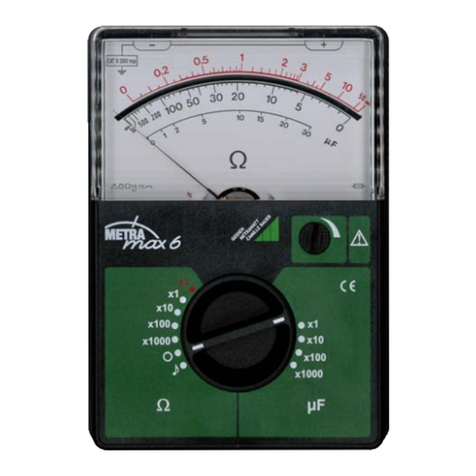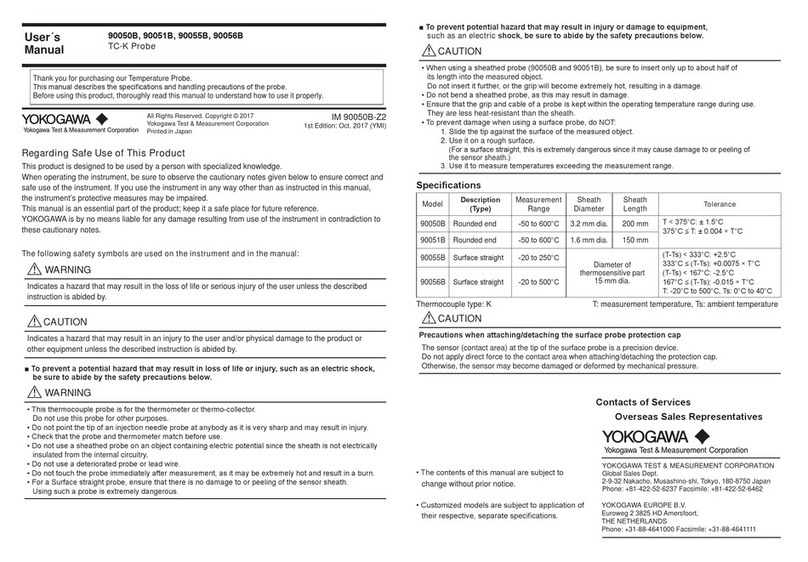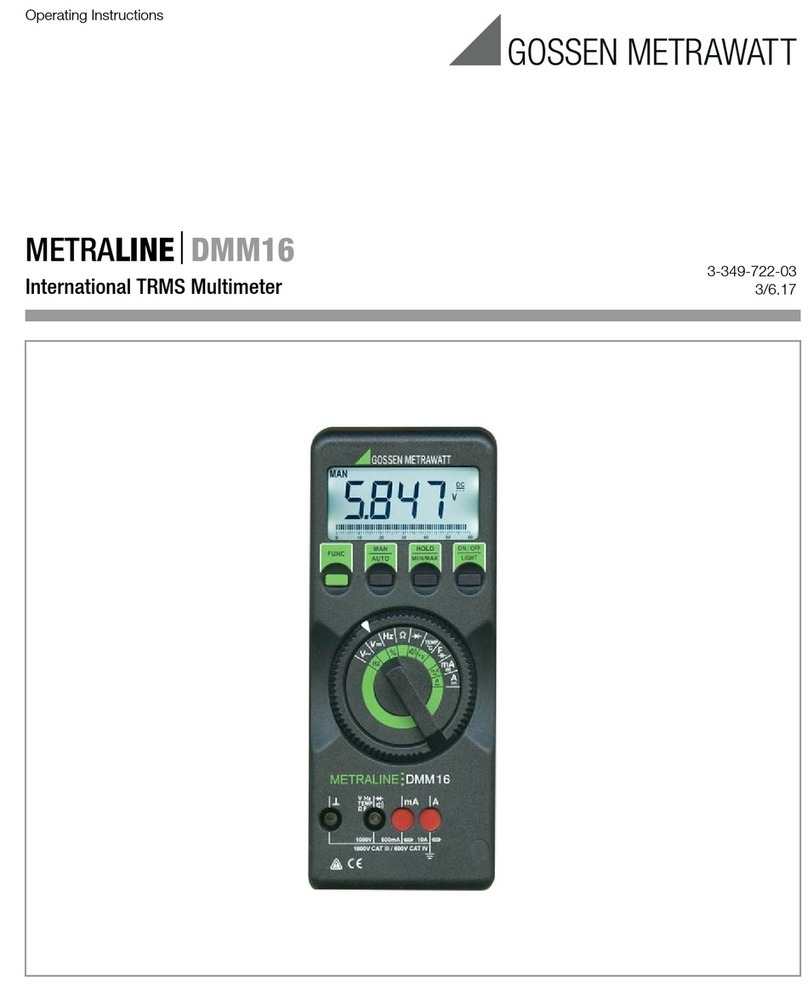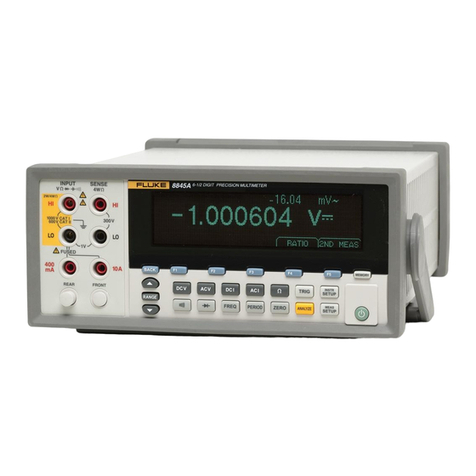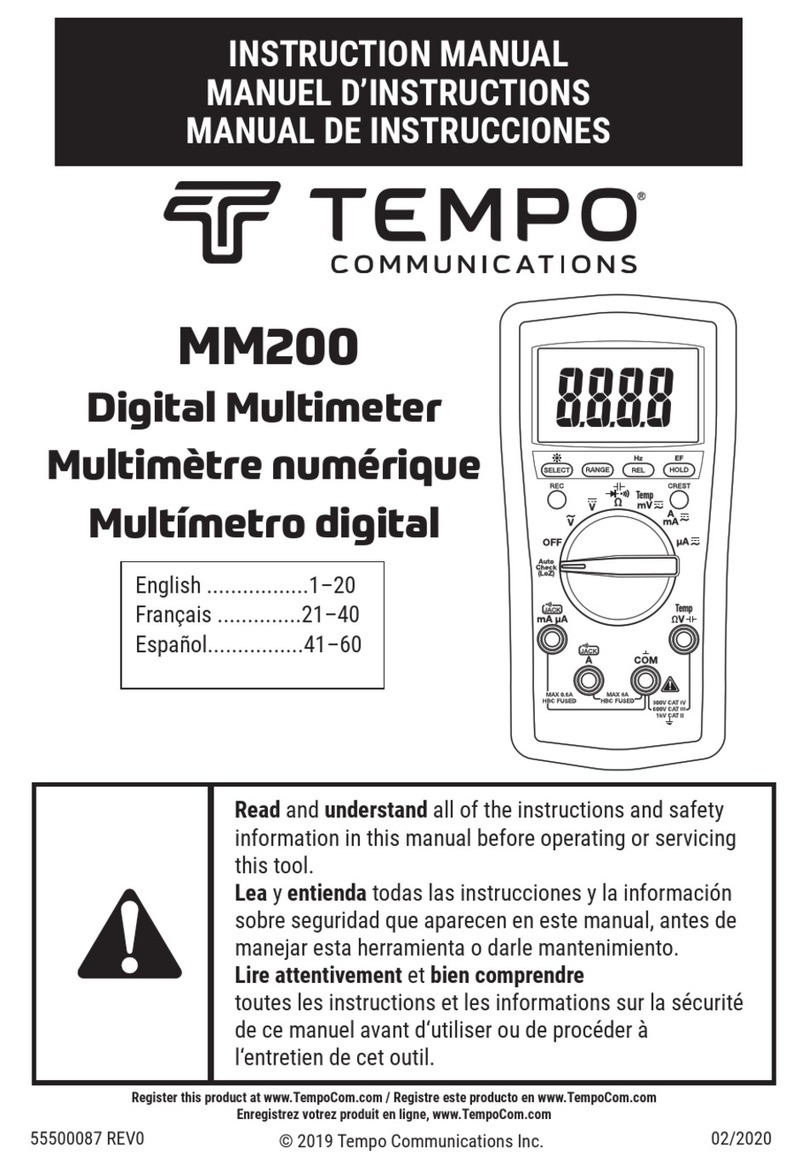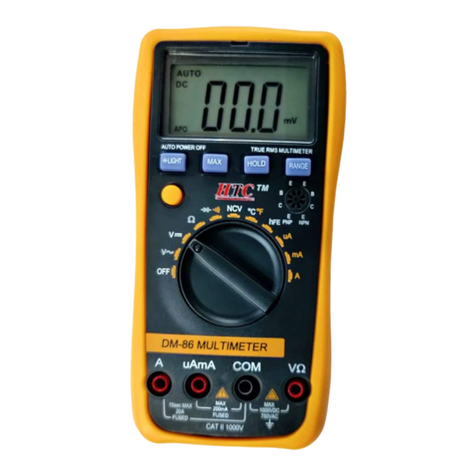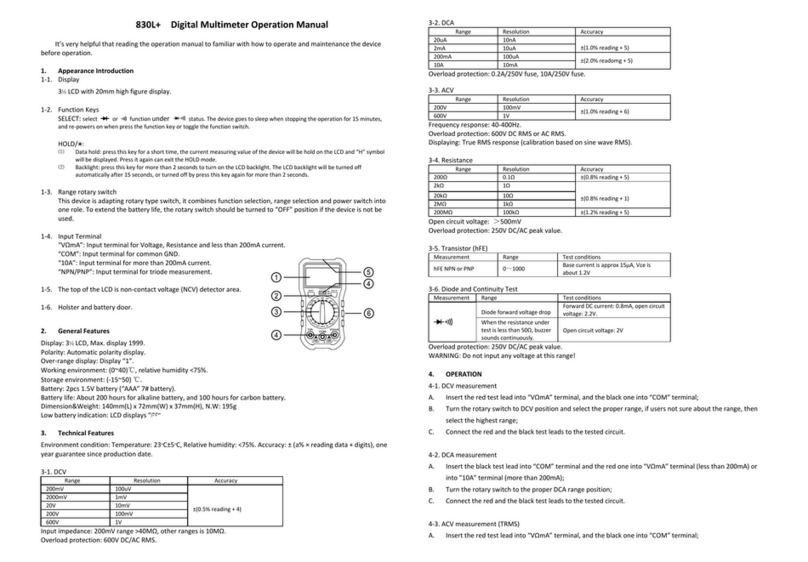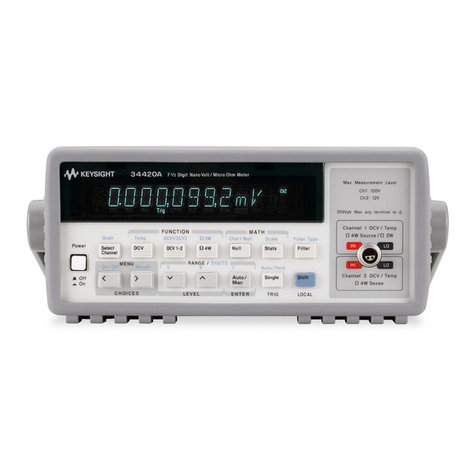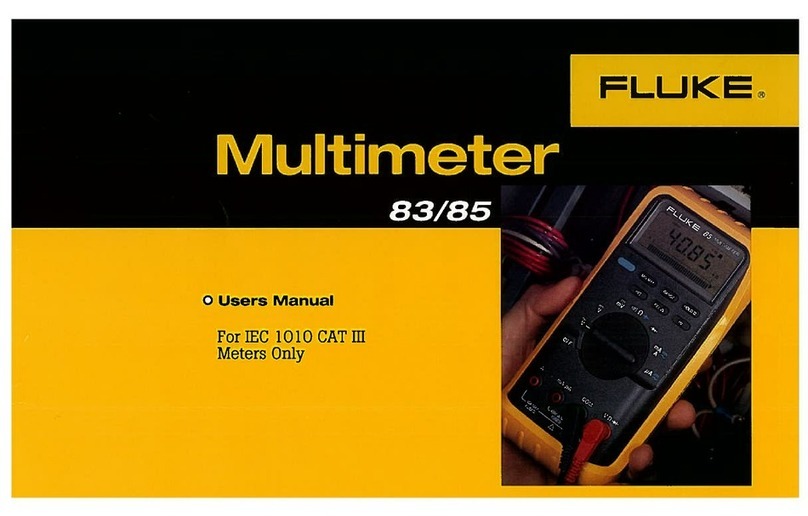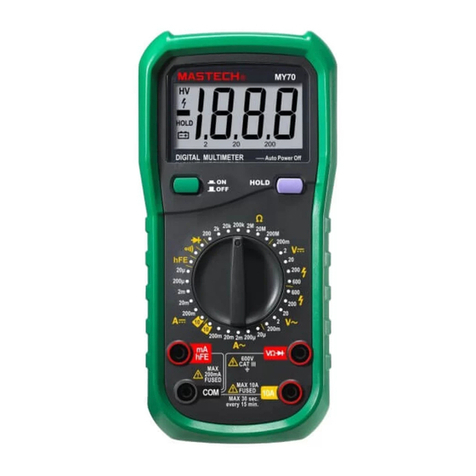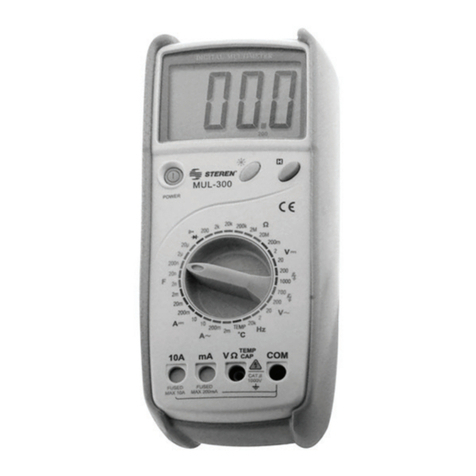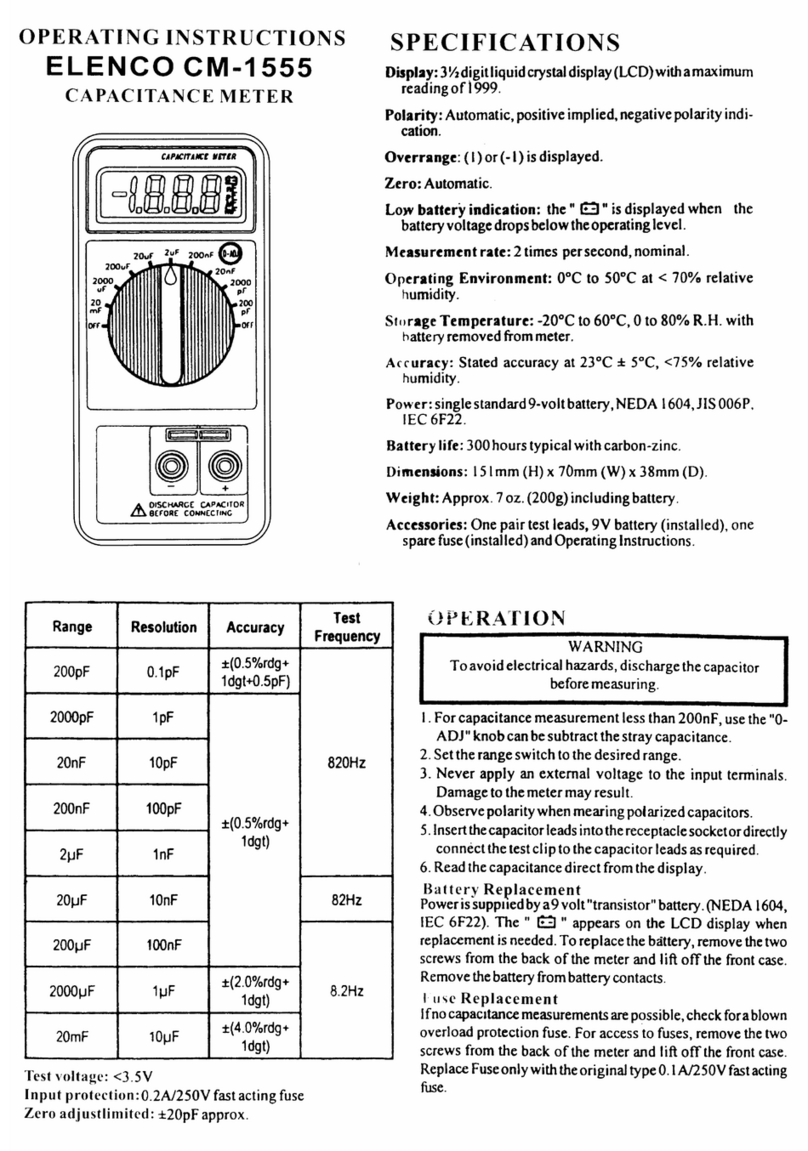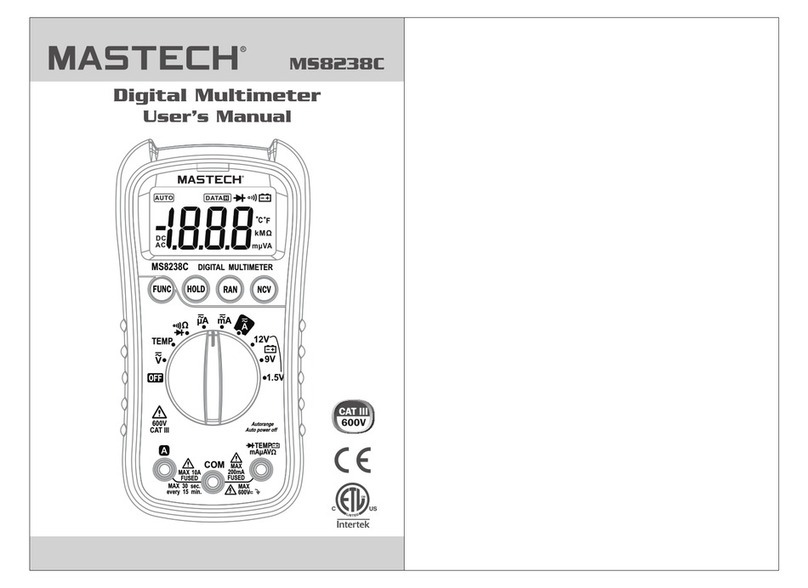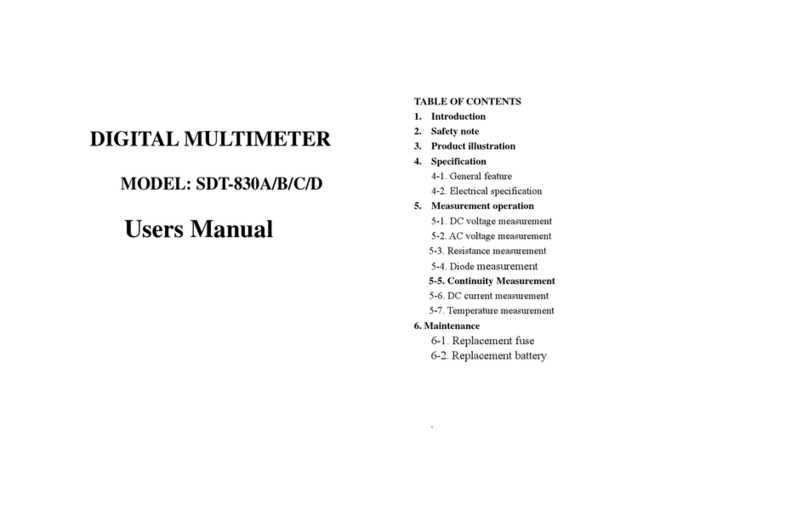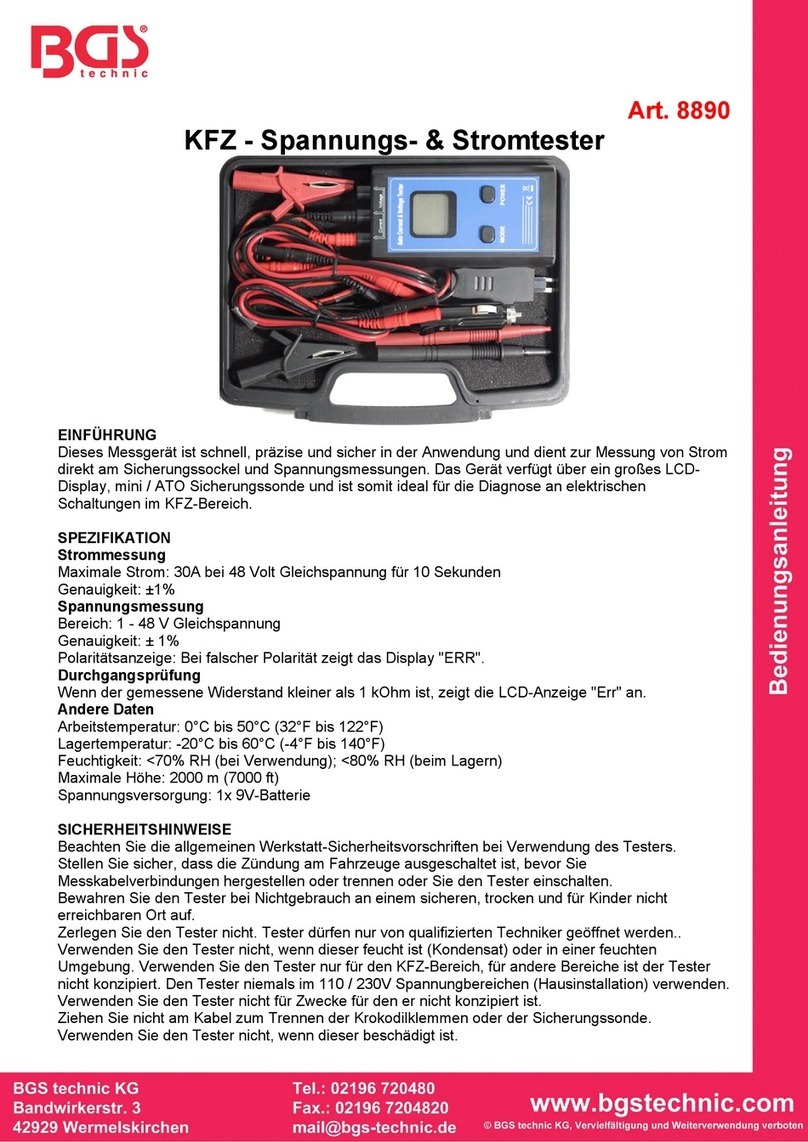Digital Multimeter –DM 81 User Manual
I. General Instruction
This meter DM-81 is 31/2 digital multi-function meter, which focus on large scale
integrated circuit design and A/D converter, as well as full overload protection, meter
can measure AC/DC voltage, AC/DC current, resistance, capacitance, diode forward
voltage drop, transistor hFE parameter, the transmission signal detection of infrared
remote controller (remote control) and live wire recognition.
II. Safety Precaution
This meter complies with IEC 61010-1, CAT.I 1000V standards, before operation,
please read this user manual carefully.
To avoid risk of electric shock, do not use the meter before the battery cover is in
place.
Carefully check the conditions of test leads, such as insulation, breakage or others, if
test leads is in bad condition, do not use it with the meter.
The range switch should be at right position for the testing.
To avoid electric shock and damaging the instrument, the input signals are forbidden
to exceed the specified limits.
Range switch position is forbidden to be changed at random during measurement.
To avoid electric shock, make sure max voltage between input terminal “COM” and
Earth Ground“” does not exceed over 1000V.
Take caution against shock in the course of measuring voltage higher than DC 60V &
AC 30Vrms.
Once LCD display showed ‘ ’, to change the battery to guarantee the accuracy of
measurement.
Use only moist fabric or small amount of detergent Do not use chemical solution for
cleaning the meter.
Do not store meter in high temperature and humidity conditions.
Take out of battery before storage.
III. General Description
1) DC basic Accuracy: ±1%
2) Low battery indication: “
”
3) Max. display: 1999 (3 1/2 digits)
4) Auto power off: automatically powered off in 15 minutes
5) 20A input Jack: no fuse
6) mA input jack fuse: 200mA/250V fuse
7) Installed battery: 9V NEDA/6F22 or equivalent battery
8) Environmental conditions
Working Temp.: 0℃~40℃; Humidity: <80%
